
There is no doubt about it, pain is an excellent teacher. Hornets, wasps and bees make for some vivid memories. Like many, I can still remember my first bee sting. It was in the clover of our backyard. Other stings make for memorable moments, like was the time I was on a steaming hot, dusty bus full of college students on an Everglades trip. We were driving on the old Tamiami Trail when a wasp zipped through the window hitting me in the head. I’m sure that from its point of view, it was a pretty terrifying experience. Justifiably, it decided to sting me repeatedly on the forehead. That made an already long day much longer.
I remember being terrified of the Mud Daubers that frequented the puddles around the swimming pool, lapping up water. Despite the high number of insects and their fearsome appearance, I don’t recall a single person getting stung. Even thought they have Darth Vader’s looks, they are known (by those in the insect world) to be easy-going. I found the Horseflies by the pool to be much worse. Likewise, people don’t like Honey Bees much, but they typically are fairly tolerant and don’t sting much.
Over the years I’ve probably been stung by more Yellow Jacket than anything else, usually after hitting thier nest with the lawn mower. Supposedly when one gets killed it releases a pheromone that simultaneously attracts and enrages the other Yellow Jacket in the hive to attack. Although I can’t see a pheromone, I definitely buy into that theory.
This summer I got blasted by a Yellow Jacket from a hole near our mailbox. Worried that the mailman or little kids nearby might get stung, I had to do something. After a little Internet research, we came across a recommendation for a highly effective and completely non-toxic method of eradicating the hive: the cake plate trap. Near dark, when they are less active, you’re supposed to place a clear glass bowl over the nest hole. Because this trap allows them to see light during the day, they won’t try to dig a new hole to escape. Thus, they eventually starve, and the bowl can be removed after 8-10 days.
By the middle of the first full day we used this trap, the bowl looked like a horrifying corn popper of death, with hundreds of highly irritated Yellow Jackets in the “red zone,” desperately trying to fly through the glass. Within a few days, the ground under the dome was piled with their bodies. Though gruesome in this aspect, we appreciated being able to get rid of them without using any chemicals or getting stung in the process.
I used the same method with a second hive, and it remained covered for less than a week before a skunk removed the bowl. It dug up the rest of the nest to eat the comb and larvae. Skunks apparently are some tough critters with low standards of cuisine. Of course I suppose it’s possible that Yellow Jacket larvae are delicious, but I’m not about to dig them up to find out. About a week after the skunk’s visit, while I was mowing near the eradicated nest, my foot shot through a hole, uncovering the cavity where the comb had been. That would’ve been pretty painful if the wasps were still alive and kicking.
Now for some wasp facts…
The good news is that only the females can sting; however, both sexes can scare the pants off you. Personally, I can’t discern the gender of a wasp, so I think of this as a way to determine if I’m an optimist or a pessimist.
The stinger is an adaptation of the female’s egg-laying ovipositor. This explains why the gentlemen don’t have the same weaponry. The ovipositor evolved as a way of parasitic wasps laying eggs into their insect hosts. Once injected inside the victim, the larvae digest the insect, usually a caterpillar, eating it from the inside out. They then pupate in little silk cocoons on the skin of the host. Not necessarily a happy subject, but a great way to control those garden pests.
The venom that makes these stings so memorable evolved as a way for the wasps to subdue their hosts when laying eggs. Knowing how uncomfortable a Yellow Jacket sting is for a human, I can’t imagine getting blasted by one of these guys if I were a tiny insect! That has to be a life-changing moment.
Some stingers evolved with saw-toothed edges, and others are streamlined and flat. Those with the smooth surfaces can sting multiple times. Honey Bees have barbed stingers which typically, but not always, pull out of the bee. This gives you a chance to remove the stinger before all the venom is pumped in. Unfortunately for the Honey Bee, she received a death sentence when it ripped off the back end of her body.
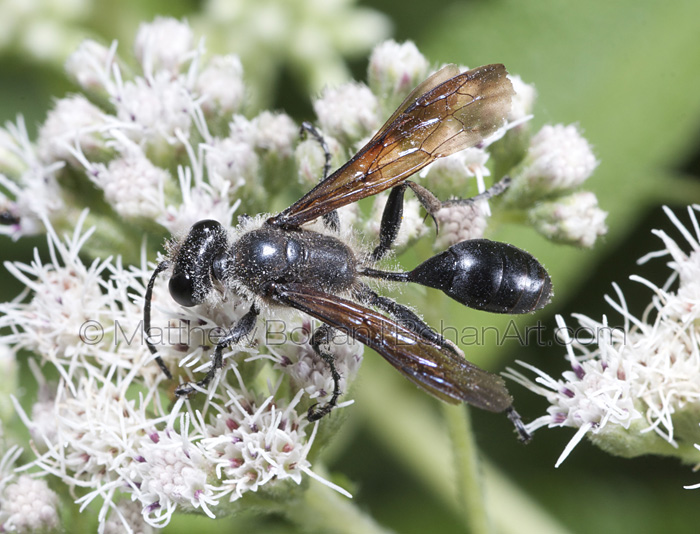

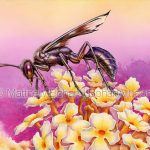
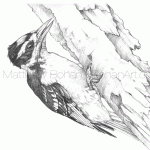
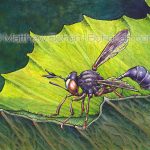

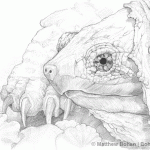
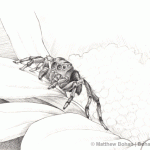
Leave a Reply